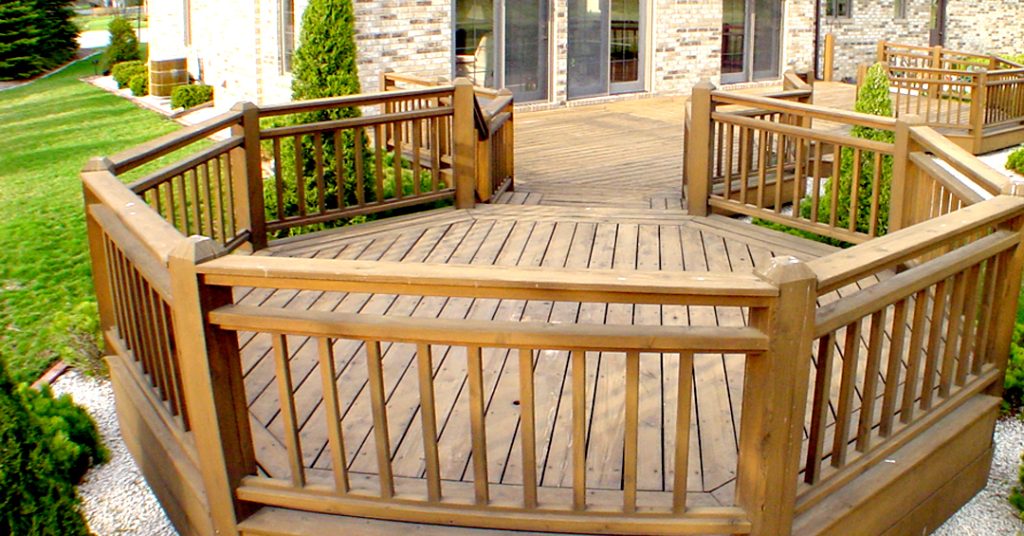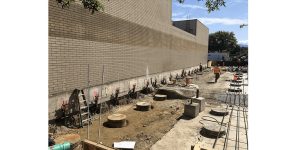The Ultimate Guide to Choosing the Perfect Fence for Your Home
6 min read
The Ultimate Guide to Choosing the Perfect Fence for Your Home. With so many materials, styles, and purposes, it’s essential to understand your needs and the options available to make an informed decision. Whether you are looking for privacy, security, aesthetic appeal, or a combination of these, this comprehensive guide will help you navigate the process. Additionally, we’ll explore how principles from efficient ATM construction can be applied to choosing and installing your perfect fence, ensuring that your investment is both functional and durable.
Understanding Your Needs
Privacy
One of the primary reasons homeowners install fences is for privacy. If your main goal is to create a secluded space, consider fences that are tall, solid, and constructed from materials that block the view from the outside. Options like wood, vinyl, or composite fences are excellent choices for privacy.
Security
For those concerned about security, a sturdy and tall fence is essential. Metal fences, such as wrought iron or aluminum, are popular for their durability and the security they provide. Adding features like pointed tops or a robust gate can enhance security further.
Aesthetic Appeal
Fences can significantly enhance the curb appeal of your home. Choosing a design and material that complements your home’s architecture and landscape is key. Picket fences, horizontal slat fences, and decorative metal fences are some options that can add charm and elegance to your property.
Multifunctional
In many cases, homeowners need a fence that serves multiple purposes. A combination of privacy, security, and aesthetics can be achieved by thoughtfully selecting materials and designs. For example, a tall wooden fence with a decorative top can offer both privacy and visual appeal.
Choosing the Right Material
Wood
Wood is a classic choice for fencing. It offers a natural look and can be customized with paint or stain to match your home’s exterior. Types of wood commonly used for fences include cedar, redwood, and pine. While wood requires regular maintenance to prevent rot and weather damage, its timeless appeal often outweighs the upkeep.
Vinyl
Vinyl fencing is a low-maintenance alternative to wood. It’s available in various styles and colors, and it won’t rot, warp, or need painting. Vinyl fences are durable and can last for many years with minimal upkeep, making them an attractive option for busy homeowners.
Metal
Metal fences, including aluminum, steel, and wrought iron, are known for their strength and longevity. These fences are ideal for security purposes and can be designed to add a sophisticated look to your home. While metal fences can be more expensive upfront, their durability often makes them a cost-effective choice in the long run.
Composite
Composite fencing combines wood fibers and plastic to create a durable, low-maintenance option. It offers the look of wood without the susceptibility to rot and insect damage. Composite fences are available in various colors and styles, providing flexibility in design.
Chain Link
Chain link fences are a practical and affordable option, especially for large areas. While they don’t offer much in terms of privacy, they are excellent for security and are often used in backyards, gardens, and around pools. Adding privacy slats can enhance their functionality.
Design Considerations
Height and Length
The height of your fence will depend on its purpose. For privacy, fences should be at least six feet tall. For decorative purposes, shorter fences can be just as effective. Ensure your fence’s height and length comply with local zoning laws and homeowners’ association regulations.
Style
Choose a style that complements your home’s architecture. For example, a traditional home might look best with a picket fence, while a modern home could benefit from a sleek, horizontal slat design. Mixing styles can also create a unique and personalized look.
Color
The color of your fence should harmonize with your home’s exterior. Neutral colors like white, black, or natural wood tones are versatile and timeless. Bold colors can make a statement but should be used thoughtfully to avoid clashing with your home’s aesthetic.
Installation Tips
Professional vs. DIY
Deciding whether to hire a professional or tackle the project yourself depends on your skills, tools, and the complexity of the fence. Professional installation ensures the job is done correctly and can save you time and effort. However, a DIY project can be rewarding and cost-effective if you have the necessary know-how.
Preparation
Proper preparation is crucial for a successful installation. Mark your property lines accurately, obtain necessary permits, and call your local utility companies to mark underground lines. Preparing the ground by leveling it and clearing debris will ensure a smooth installation process.
Efficient ATM Construction Principles
Interestingly, the principles used in efficient ATM construction can be applied to fence installation. Efficient ATM construction focuses on durability, security, and ease of use. Here’s how these principles translate to fencing:
- Durability: Choose high-quality materials and ensure they are treated or coated to withstand weather conditions. Regular maintenance, such as staining or sealing wood fences, will prolong their lifespan.
- Security: Just as ATMs require secure installation to prevent tampering, your fence should be installed with security in mind. Use sturdy materials and secure gates with robust locks.
- Ease of Use: An efficiently constructed ATM is user-friendly. Similarly, your fence should be designed for ease of access and maintenance. Ensure gates open smoothly and are wide enough for necessary access.
Maintenance
Regular Inspections
Regular inspections can help you catch and address issues before they become major problems. Check for loose posts, damaged panels, and signs of rot or rust. Addressing these issues promptly will prevent further damage.
Cleaning
Different materials require different cleaning methods. Wood fences can be cleaned with a mild detergent and water, while vinyl fences can be hosed down. Metal fences may need rust removal and a fresh coat of paint to prevent corrosion.
Repairs
Prompt repairs are essential for maintaining the integrity of your fence. Replace broken panels, tighten loose screws, and fix any sagging gates. Keeping up with repairs will ensure your fence remains functional and attractive.
Cost Considerations
Initial Cost
The initial cost of your fence will depend on the materials, length, height, and complexity of the design. Wood and chain link fences are generally more affordable, while vinyl, metal, and composite fences can be more expensive.
Long-Term Costs
Consider the long-term costs of maintenance and repairs. While vinyl and composite fences have higher upfront costs, they require less maintenance than wood, potentially saving you money over time. Metal fences, while durable, may need occasional rust treatment and repainting.
Enhancing Your Fence
Landscaping
Landscaping around your fence can enhance its appearance and integrate it into your yard. Planting shrubs, flowers, or vines can soften the look of a fence and add color and texture. Be mindful of plants that may damage the fence over time, such as aggressive vines.
Lighting
Adding lighting to your fence can increase security and create a welcoming ambiance. Solar lights are an eco-friendly option that can be easily installed along the fence line. Motion sensor lights near gates and entrances provide additional security.
Decorative Elements
Incorporating decorative elements like lattice panels, post caps, and finials can add a personal touch to your fence. These features can enhance your fence’s overall look and feel, making it a more integral part of your home’s exterior.
Conclusion
Choosing the perfect fence for your home involves considering your specific needs, exploring material options, and planning for installation and maintenance. By understanding the principles of efficient ATM construction, such as durability, security, and ease of use, you can make informed decisions that will result in a functional, beautiful, and long-lasting fence.




